How Mushrooms Can Save the World
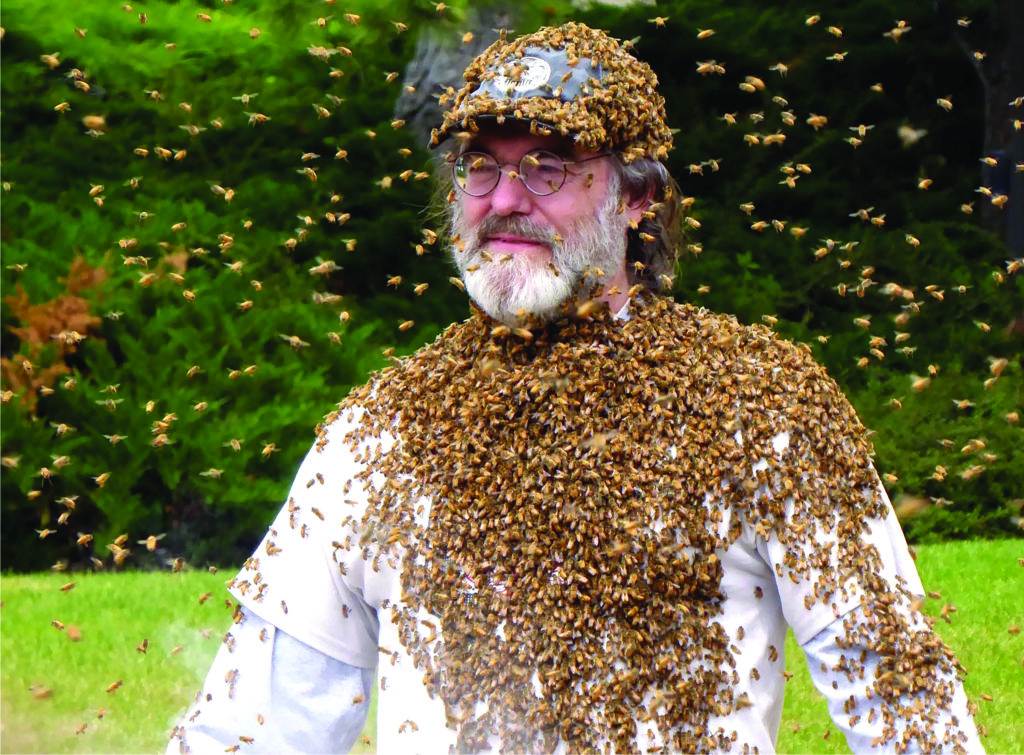
By ROB SIDON
Paul Stamets was born in 1955 into a wealthy industrial family that had been the primary employer of the town of Columbiana, Ohio, until the business collapsed and sent the family into poverty and disarray. Paul developed an acute stutter perhaps as a result—a condition that would be cured after his first experience with psilocybin mushrooms. Paul’s fascination led him to become one of the world’s leading mycologists. He controls numerous significant patents, including the most recent, which aims to reverse honeybee colony collapse disorder with extracts of mushroom mycelia.
The author of six books, including Mycelium Running, Paul has received numerous recognitions and helped the US government’s post-9/11 Project BioShield. A disruptive technologist, Paul is a staunch advocate of fungiculture as a means of ecological restoration. He gave a popular TED Talk titled Six Ways Mushrooms Can Save the World. He started Fungi Perfecti in 1980, which now produces the Host Defense product line of mushrooms and extracts that he co-created with his wife and business partner, Dusty Yao.
Later this year CBS will unveil a new Star Trek series. In the character previously occupied by Mr. Spock, the updated Starfleet science officer will be a fungus expert and astro-mycologist named Lt. Stamets—in recognition. We talked with Paul at his and Dusty’s bucolic Sonoma County home.
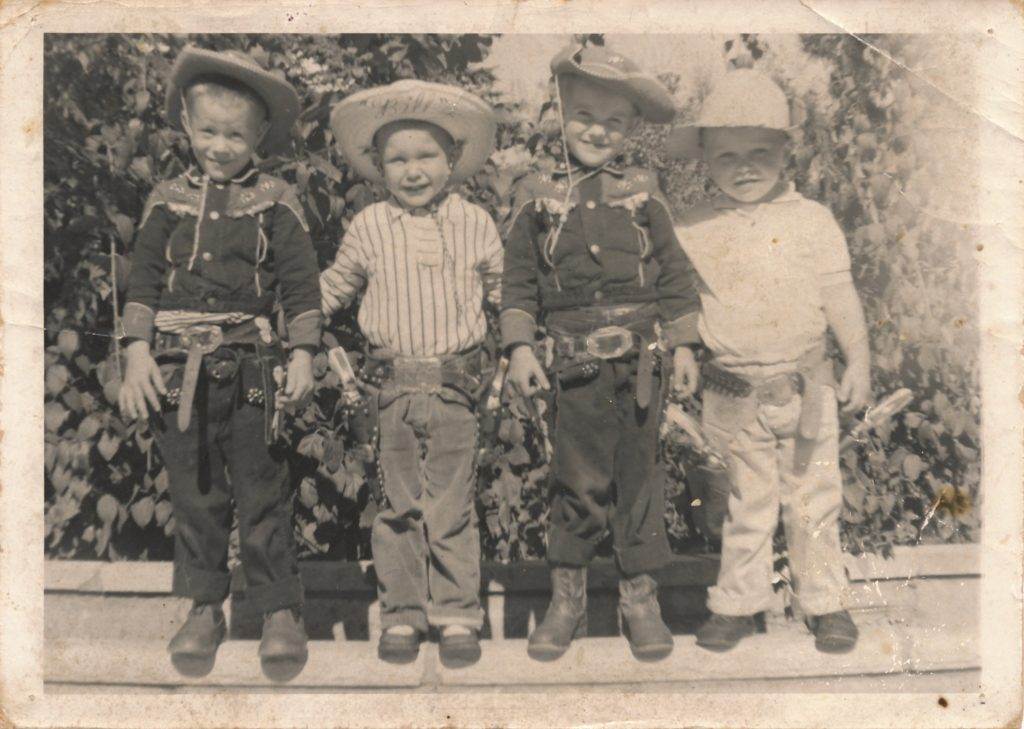
Common Ground: To those unfamiliar with Paul Stamets, how would you describe yourself and your mission?
Paul Stamets: Firstly, I’m an earthling who is extremely concerned about the future health of this planet and its inhabitants. Secondly, I am a biologist. And thirdly, I am a mycologist who specializes in fungi. Despite people’s overwhelming feeling of despair, I’m optimistic because once you see solutions that are ecologically rational, implementable, and scalable then there’s reason for optimism.
You’re the world’s foremost mycologist. What is your specialty?
I’ve never used that phrase. [Chuckles] People are overly generous in their attributes to me. There are close to two million species of fungus and perhaps 50,000 mycologists in the world, so it’s a deep well of knowledge and we tend to become ultra-specialists. An expert in Penicillium molds may not know how to grow oyster mushrooms. My specialty is using electron microscopy and the taxonomy of the Strophariaceae family, which includes most psilocybin-containing mushrooms. Then I became focused on culinary and medicinal mushrooms.
How did that interest come about?
It was a few things. Mostly because I was the youngest of four boys growing up in the small town of Columbiana, Ohio. I was imprinted by my older alpha brother John. He had an awesome, fully equipped home laboratory in the basement with three or four rows of chemical shelves that I wasn’t allowed to touch. The only time I was allowed to be in the laboratory was if I was “playing with the radio.” My father had been a lieutenant on the aircraft carrier USS Intrepid, which is now in New York Harbor. After World War II he was given the Intrepid’s main radio, which we kept in the basement lab. I strung up a massive long-wave antenna with glass insulators between trees and was able to listen to coded messages from behind the Iron Curtain. I felt like a spy in the 1960s, which was very weird.
John went away to school at Yale and came back on school break with Charles Tart’s textbook Altered States of Consciousness, which was an anthology of research experiments. I asked if I could borrow it, and he said sure. In turn I lent the book to my best friend, Ryan, who didn’t return it. I kept bugging Ryan about it until one day he told me that he couldn’t return it because his dad had burned it. I owe Ryan’s father a big thank-you because his act of feeling so threatened by a book only further marshaled my enthusiasm. That and the fact that my brother John was coming home with amazing mushroom stories from his “trips” to Mexico and South America.
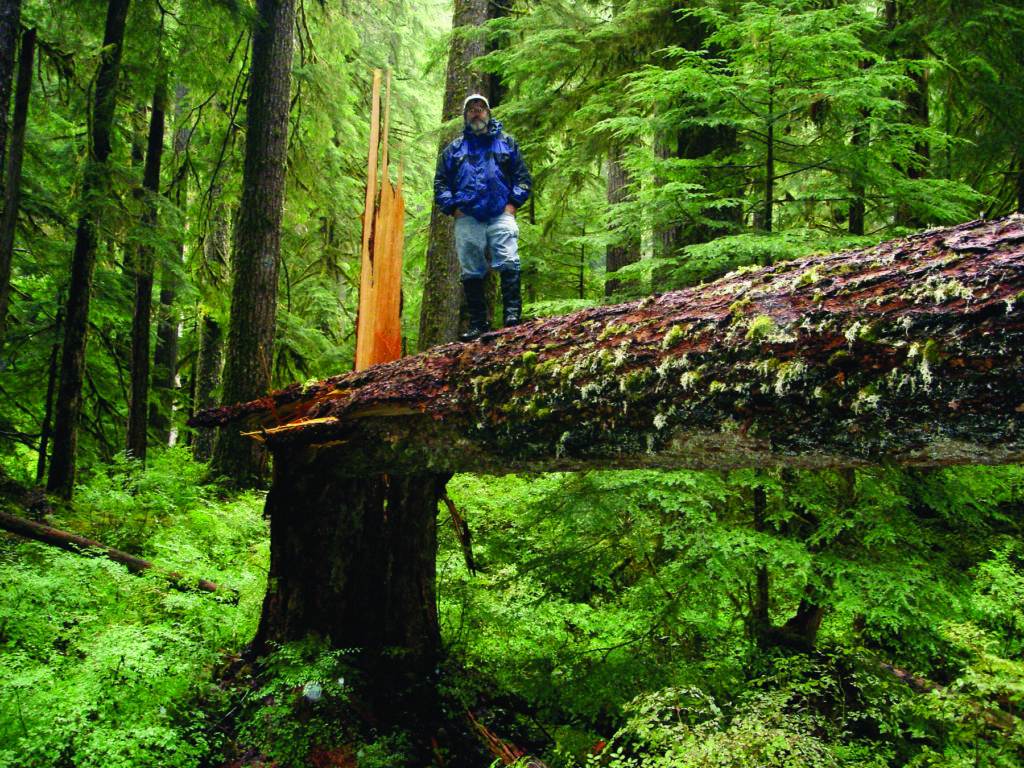
Can you describe your first psilocybin experience?
The background to that story is that I was a severe stutterer all my life, to the point where they wondered if I was mentally deficient. Like t-t-t-t-t. I could sing and talk to animals without stuttering but couldn’t communicate and make eye contact with people. As a freshman loner at Kenyon College I bought $20 worth of magic mushrooms but got no information on how to take them. I walked into the hills and ate the whole bag on the way up. Then I climbed this tall tree at the top of the hill with a great vista, and there was a summer storm approaching with big, boiling black clouds and lightning striking in the distant horizon. I thought, “Oh, how great to see a storm from this tree.” I was getting higher and higher, and it was so intellectually fascinating. With each lightning strike, great visuals reverberated before me. I saw fractals and geometric patterns flooding my visual field, with beautiful mosaics and patterns ebbing and flowing—all the things I had read about. Soon I realized, “Oh gosh, the storm is here.” With massive rains and lightning all around me, it dawned on me, “I’m on the tallest tree on the tallest hill for miles during a lightning storm. Things can get real here, Stamets. You could be killed at any second.”
The wind was creating a pressure bubble, and the winds picked up. Soon I had vertigo as the tree swayed back and forth. I was holding onto the tree like it was a torch—it comforted me and became my axis mundi. I felt connected to the power of the earth, its roots, and the mycelium and immersed into Gaian consciousness. I felt like a spiritual warrior.
I thought, “This is my time. If I survive this experience what do I learn from it?” It was a teaching moment. I thought about my stutter and my inability to communicate—that it sucked because I couldn’t date ladies. They wanted self-assured jock types, not some bashful sst-sst-stutter-rer. So I said to myself, “Stop stuttering now.” That became my mantra. I said it hundreds if not thousands of times that day. The next morning I woke up and went to breakfast, where there was this young lady who I very much liked. I had never dared say anything to her for fear of humiliation, but she happened to look at me in a kind, consoling way and said, “Good morning, Paul.” I then looked her straight in the eyes and said, “Good morning, how are you today?” I stopped stuttering in one day.
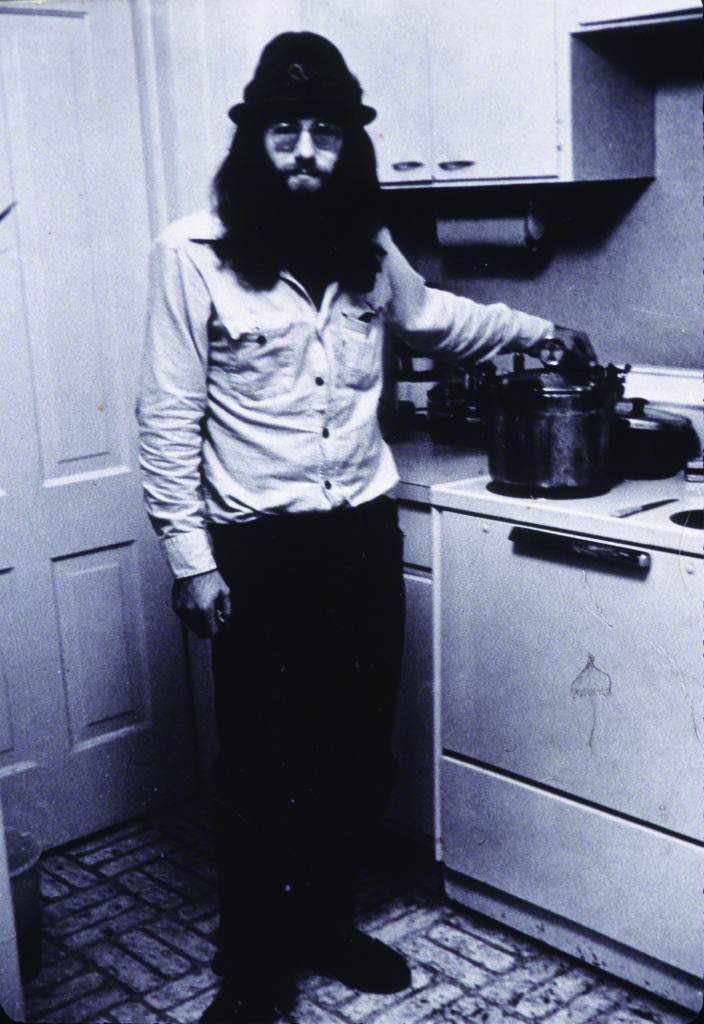
What a story! Why do you think you stuttered in the first place?
I grew up in a very dysfunctional house. My father was the son of a well-known industrialist from Pittsburgh who inherited a little empire, but he didn’t go through what I’d call the school of hard knocks and was taken advantage of. In Columbiana, Ohio, the Stamets Enterprise Company was the largest employer, so when the company went bankrupt and everybody got laid off, our name and reputation suffered a lot. We lost everything. We lived in this big house, and the power and water were turned off. We moved to the other side of the tracks, and we lived in a tiny apartment. The stress on my mother and father was too much. My mother turned into a charismatic Christian and went to Seattle. For some odd reason I got good at repairing vacuum cleaners and stepped up to help my mother. “I’m with you in the trenches, Mom; we’re going to get through this together.”
My father was an engineer by training and became a clear example of age discrimination. At around 54 he sent over 500 applications and received only two interviews. He ended up building nuclear power plants for Babcock and Wilcox for awhile until one day they shut down and fired him without notice. He was devastated. You can imagine the contrasts, as he grew up in the lap of luxury with a full-blown black limousine with an African American driver who drove him to high school during the Depression. I don’t blame him for his upbringing, but I have this theory of alternating generations. One generation makes it and the next one loses it unless they go through the school of hard knocks. I think having the rug pulled out from under you and then being able to climb back tests you and hones your survival skills. It’s what makes you. So the most important experience of my life was seeing the entire family empire disintegrate.
Thus the stutter.
I should say that I do still stutter on occasion, like when I met Bill Gates or am star-struck or if I’ve been drinking or, surprisingly, when there’s lots of noise. It’s amazing how cruel people are to stutterers—it shows the worst of human behavior. Rather than being empathetic, they make fun as if to prove superiority.
Financially you’ve been up and down many times since childhood, but you’re very successful now.
There are many people who helped on this path who believed that we were doing something important who get credit. I’ll forever be grateful to a banker who came over to hang out for a weekend just before they were going to cut off the phones. He said, “You really need money, don’t you?” I’d been bouncing checks and was ashamed to admit it but said, “Yes, things are pretty tough right now.” The truth is, I’d laid in bed many nights crying because things were falling apart, and just thinking about it . . . brings back deep emotions [pauses but holds back tears] because out of the blue the banker gave me a check for 50,000 bucks. And he said, “This is not a loan, this is to help you.” This was back in 1984, and seriously, without that money I would have gone under.
So I believe in the power of goodness. I believe in karma and paying it forward. I also believe that you should never chase money for the purpose of money but always be true to your ideals. Believe in a higher cause for the better good of the commons, and people will vote with their pocketbook. Money has followed me, but I never chased money. It’s an important lesson. I like the people who went through the school of hard knocks because if you’ve gone through something together, you really know their mettle. When the waters get rough, a lot of people bail.
Working with mycelium is clearly your calling. What’s the secret intelligence of mycelium?
One definition of intelligence is the ability to respond to change and to set up future resources to the benefit of the survival of your offspring. A recent experiment with five bean plants quickly demonstrates how mycelium is a communication network—the foundation of the food web. At first the experiment isolates five separate bean plants in separate pots in a laboratory, and each one was growing with mycorrhizal fungi. The first plant was given aphids, whereupon exposure the plant produced an alkaloid, an easy-to-measure anti-aphid toxin that is well known to inhibit aphids from consuming the plant’s leaves. The four other plants were not exposed and did not produce this alkaloid. Then they repeated the experiment and let all the plants grow together, with the mycelium running between the root zones in common potter’s soil. When the first plant was given aphids, the four other plants upregulated and expressed the anti-aphid alkaloids, thus proving there was communication via the mycelium. The neighboring plants were alerted that a pathogen—a parasite—was on the horizon.
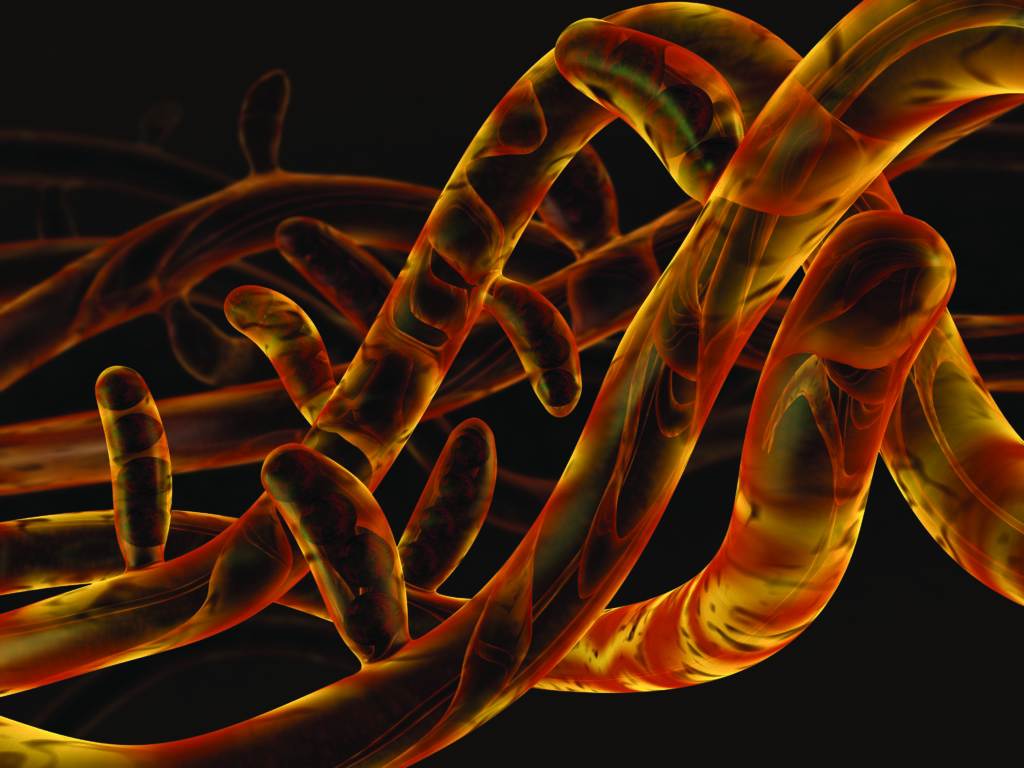
It’s like the earth’s natural internet.
Yes, it’s a communication pathway that is going on, using levels of complexity that our best supercomputers cannot even begin to touch. I go to tech conferences, and some of these tech people think that everything can be digitalized into ones and zeroes—that we can decode nature. It’s the hubris of the humans to think they know so much. A single gram of good garden soil contains up to 10 million microbes, and each one of them is in constant biomolecular communication with its neighbors. If you include up to five million separate colonies of organisms and thousands of species all talking to each other, the level of complexity is extraordinary. So we’re beginning to get there, but there’s a long road ahead before we can replicate the complexities of deep nature.
Can you expand on your theory of life and the web analogy?
Dark matter begets life. Life forms single cells. Single cells associate into strings of cells. The cellular filaments then fork. Networks and membranes form into interlacing, intersecting mosaics of networks that collaborate or compete. Networks are a natural consequence of matter. When we look at the networks of mycelium or we look at the organization of neurons or the organization of the internet, or when we look at string theory and dark matter, they’re similar. They’re all repetitions of the same network design—which are mycelia-like. They vary by orders of magnitude. This is the way of nature—resilient networks that allow for communities to survive and adapt to change. Network-based organisms have an evolutionary advantage that single organisms lack. Knowing that I re-molecuralize back into the networks of nature makes me feel better about my own mortality.
We’re in the midst of the sixth extinction. Can you explain how mycelium can be a defense?
Our landscapes are infused with mycelial networks, and our links are becoming destabilized. The typical form of destabilization is loss of biodiversity due to toxins and monoculture-based agriculture. One of the simplest things people can do is, after there is a storm to not send off your storm debris. Chop up the wood and keep it resident on the ground. This creates highly fractualized surfaces and multiple canopy decomposition pathways where these microbes can set up homes, and this supports the biodiversity of the ecosystem. I should make a bumper sticker that says “Let It Rot.” We need to reframe the concept of decomposition into regeneration.
How is mycelium an antidote to global warming?
The greatest reservoir of biological carbon is old-growth forest, and few people realize that the largest deposits of biological carbon is fungal. Thirty percent of healthy soil is biological—microbes. Of that, 70% is fungal. In other words over 20% of the mass of healthy soil is fungal. A recent article in Nature Communications reaffirms this. After a human-dominated habitat is left alone for 70 years, approximately 75% of the carbon is held within the mycelium, while it started out at a mere 10%. The best way to offset global warming is to reestablish the carbon bank using mycelium in the ecosystem. It not only establishes biodiversity and sustainability, but it buffers the carbon offsets.
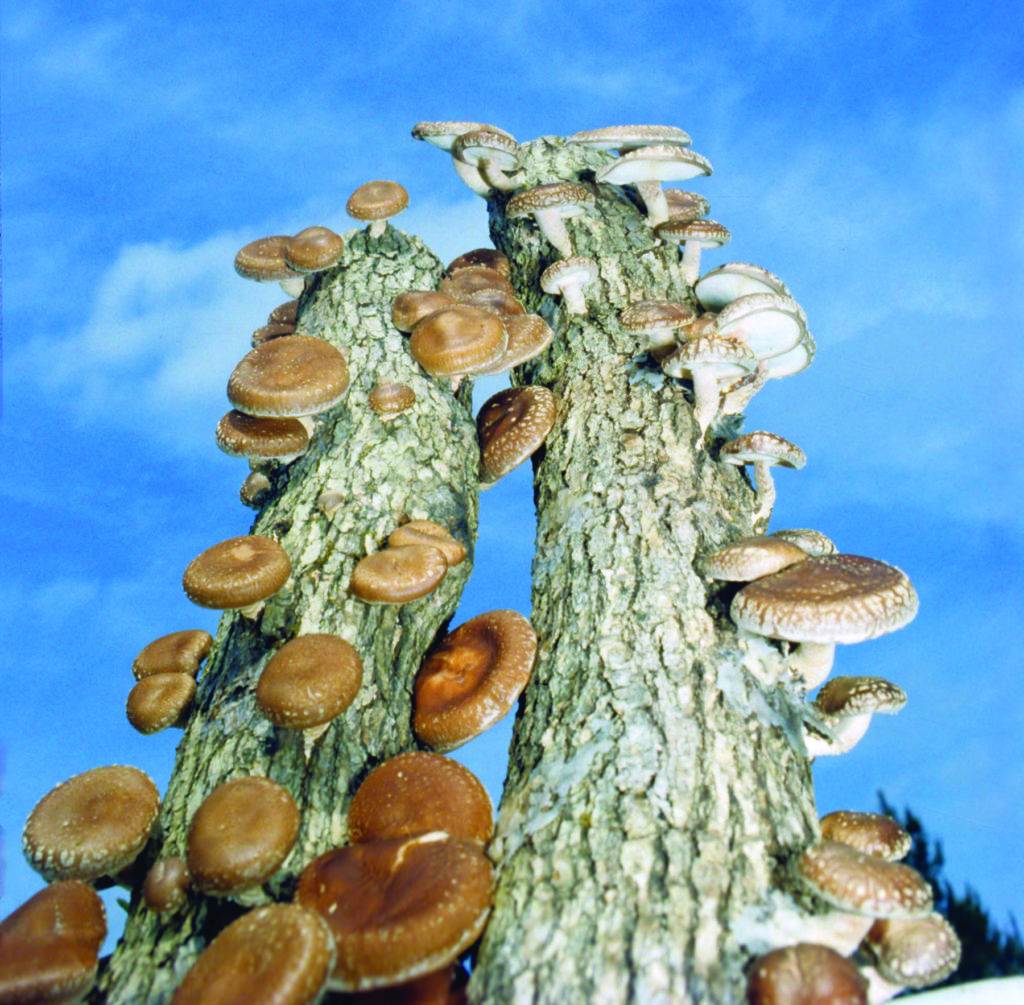
You say our human ancestry is proto-fungal. What does that mean?
Six hundred fifty million years ago we—Animalia—shared a common ancestor with fungi. Because we have more common ancestry with fungi than any other kingdom, including bacteria or plants, our cells look very similar under the microscope. Six hundred fifty million years ago there was a divergence where fungal networks went underground to digest their nutrients externally, like an externalized stomach. We chose a route of encircling our nutrients in a cellular sac and then digesting our nutrients inside an envelope. This is why our best antibiotics—and we have good ones against bacteria, though increasingly fewer—come from fungi. But antifungal antibiotics tend to be extremely toxic to us. Fungicides and the war against fungi is war against our own biology. Our DNA and fungal history are intertwined.
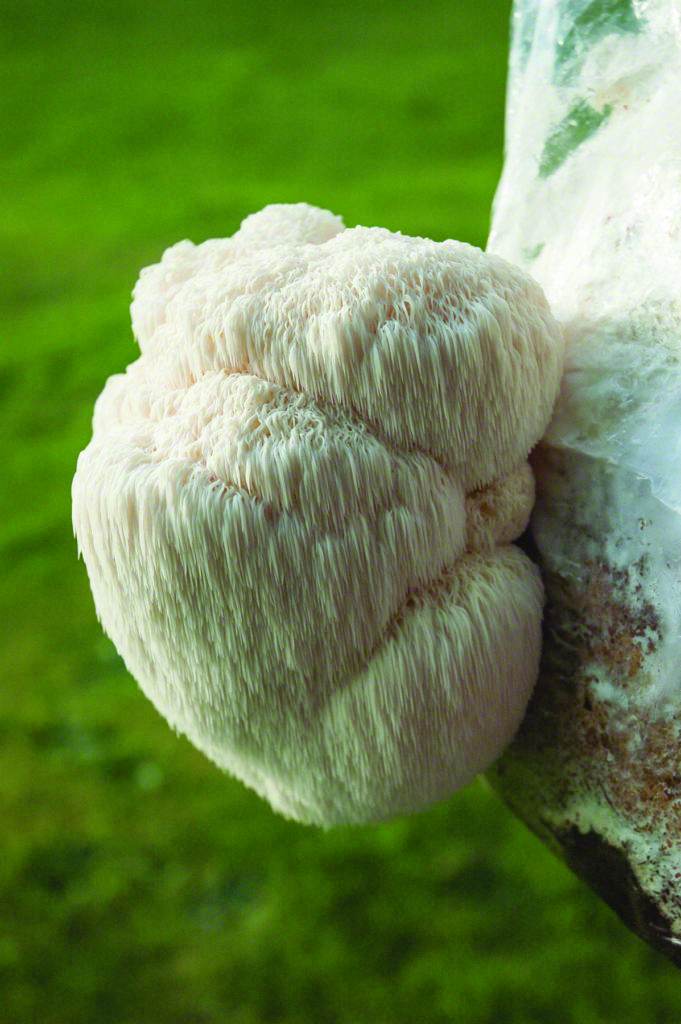
What’s your message to Americans about mushrooms as food?
I recommend eating a variety of mushrooms at least three times a week but only certified organic ones. And don’t eat mushrooms or consume supplements coming from China. If you knew what I know! Like us, mushrooms inhale oxygen and exhale carbon dioxide but hyperaccumulate heavy metals and pollutants. So try to consume mushrooms only where there is minimal air pollution.
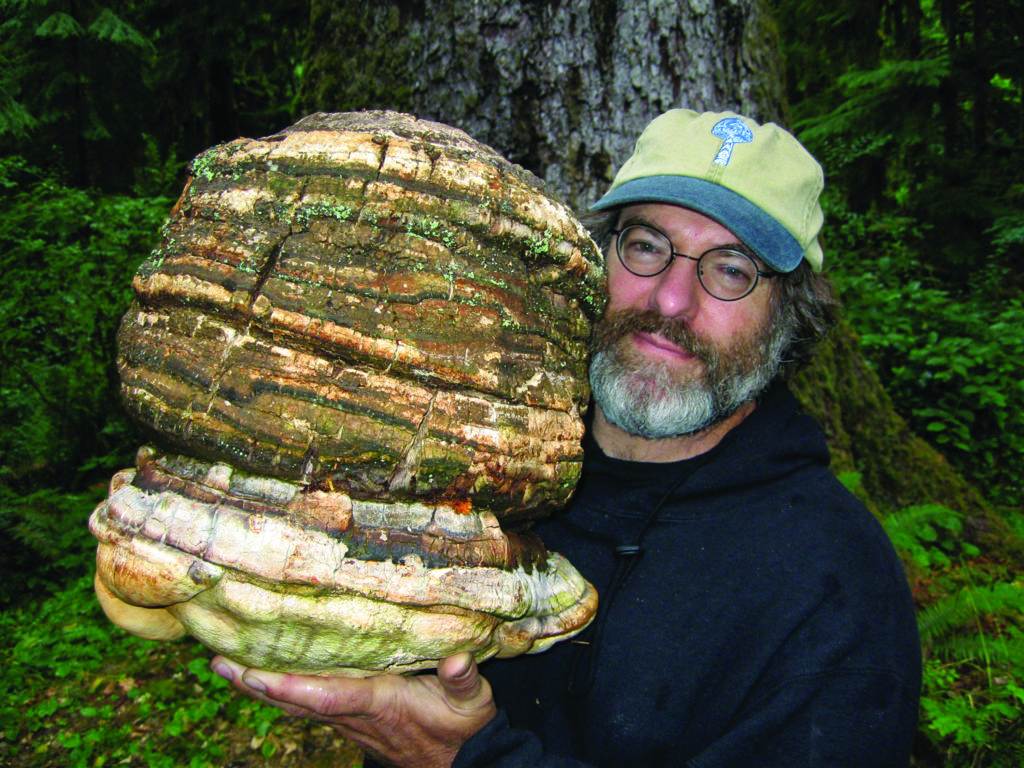
What are your favorites?
There are cultivated mushrooms and wild mushrooms. Of the cultivated I love shiitake because they’re so versatile. Lion’s mane has neurogenic properties—it’s the smart mushroom. Maitake, bunashimeji, and trumpet mushrooms are delicious. In terms of wild mushrooms, porcinis are fantastic because they’re big and beautiful when you cut them. Chanterelles are always good and have an unusual apricot flavor, and pine mushrooms are fantastic. Of course the Tuber magnatum, the Italian white truffle, is just the best. Truffles are the only mushrooms I don’t cook because the flavors are volatile. All others should be cooked because they’re not readily digestible.
The positive use of psychedelics is quickly coming out of the closet. I’ve heard so many stories on mainstream media recently.
It’s true. There’s an ethnobotanical theory that is dear to me right now that I give Roland Fischer and Terrence McKenna credit for. It’s called the Stoned Ape Hypothesis. Roland Fischer first identified that under the influence of psilocybin, there is increased visual acuity and the ability to detect sounds, which might have given primates an evolutionary advantage. Terrence picked up on that and amplified it enormously, and I am adding my two cents.
We know there was an unexplained increase in our ancestors’ prefrontal cortex about 200,000 years ago, when our brains and cognitive abilities grew suddenly. The theory is that while our primary ancestors were tracking animals across the savannah for meat, they did so by looking for footprints and scat, which contain insect larvae and which primates also ate. In that same manure they surely found Psilocybe cubensis, the majestic, massive golden psilocybin mushroom that grows commonly in the subtropics. Think about it. If your clan of hungry hominids is tracking animals across the plains and comes across these bodacious mushrooms in their dung, what are they going to do? Consume them and share them and get catapulted to an experience of increased visual acuity rich in flowing geometrical patterns with increased sound receptivity. You’re prone to laughter and empathy and to hugging each other and sharing emotions. The relationship of the stimulus response is called epigenesis—that environmental triggers can elicit a genomic response. This is how we adapt.
Okay, so if that happened once it’s insignificant, but if it happened millions upon millions of times it’s not so farfetched to say the Stoned Ape Hypothesis could explain the increase in the prefrontal cortex and our evolution. We know that psilocybin causes neurogenesis and overcomes the fear response. Those studies have been done on mice and with humans suffering from trauma. If you are the leader of your clan and don’t have such a fear response, you’re more courageous and more empathetic to your loved ones. You have greater contextual knowledge relative to nature. You’re kinder, courageous, and smarter—these are leadership skills.
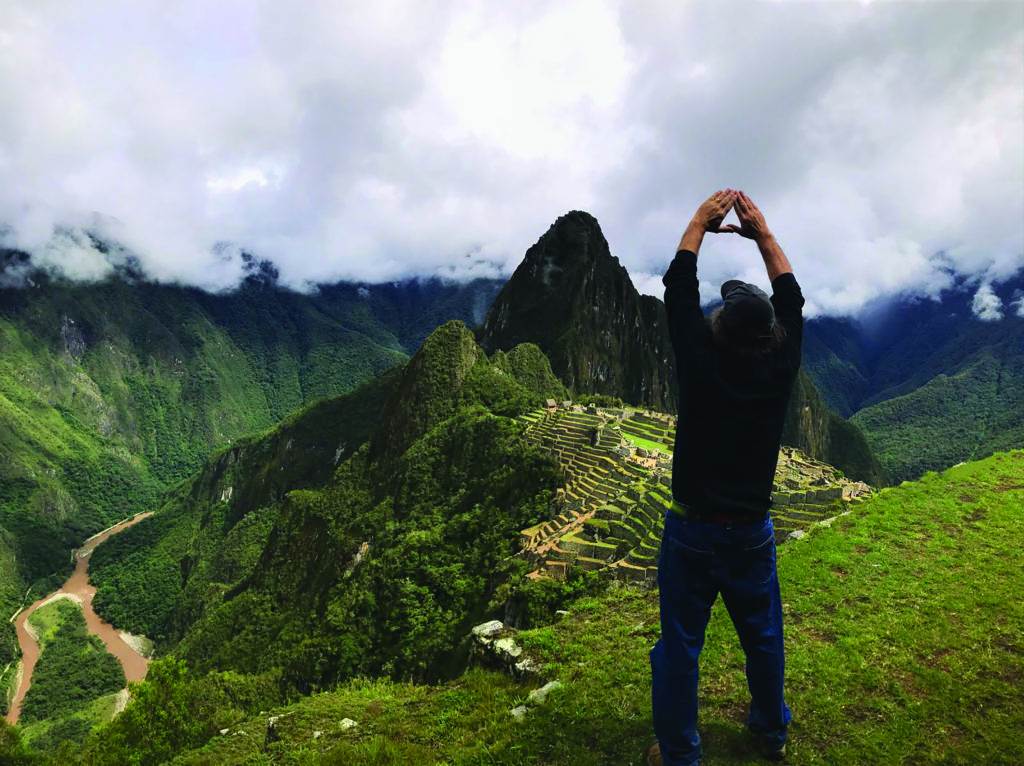
You worked with the Department of Defense on their BioShield program using mushrooms. What was that about?
In June 2001 I published two consecutive articles about the antiviral and antibacterial properties of mushrooms. Then 9/11 happened, and the government identified bioterrorism as the big genie out of the bottle because people could grow E. coli and anthrax, not to mention the viral pathogens, which are even more serious. Ironically, I have a debt of gratitude to Dick Cheney and George Bush for establishing the Project BioShield program with multibilliondollar funding because the DOD approached me over their concern about smallpox and wanted to find novel antibacterials and antivirals. They asked me to submit samples that they would test at their top-notch laboratories in a triangular agreement between the US Army Medical Research Institute of Infectious Diseases, the National Institutes of Health, and the National Institute of Allergy and Infectious Diseases. I was given one point of contact with the Defense Department, a physician colonel.
We sent coded samples but didn’t tell them what the mushroom samples were. Several months later a Federal Express package shows up with the results. I’m lying in bed flipping through and seeing page after page of “no activity, no activity.” Then I go to sample number 77 which was “highly active.” Another sample—”highly active,” then another. I was so excited, asking myself, “What are these samples?” They turned out to be Agarikon, which is the longest-living mushroom in the world. It grows exclusively in the old-growth forest and turns out to be highly active against pox viruses.
I called the colonel, saying, “The research results are fantastic.”
He said, “What research results?”
I said, “The ones Federal Express just delivered.”
He says, “You’re not supposed to get those, I am.”
“No problem,” I say, “I’ll photocopy them and send them to you.”
The story gets bizarre when I am in Canada, and Steve, my general manager, calls me, saying, “There’s something very weird. There’s a helicopter hovering over the laboratories, and it’s real close.”
I can hear the chump, chump, chump of the blades over the phone and say, “It’s no big deal. What are the numbers on the tail?”
He says, “There are no numbers—it’s a black military chopper.”
So I told Steve, “You know what mushrooms are active against pox viruses. Give everybody copies of those cultures, then shut down the business and everybody leave—now. I don’t ever want to know who got those cultures.”
So while the helicopter was there, eight cars just split, and we shut down the business. Later, some people I know in the Defense Department said in their military lingo, “That was very smart; you decentralized yourself as a target.” I’m like, “Really! What was going on there?” They just all rolled their eyes and said, “Oh, you know, people don’t talk to each other.” They were probably trying to spook us, but the fact is that sometimes government is so uncoordinated with different branches working on different projects without talking to each other, and they’re on contradictory or even competitive investigations.
That’s an insane story.
Eventually, they shut down the BioShield program after they ran 2,392 assays on our samples. But the story gets even stranger, such as when we submitted samples with the NIH for a very bad virus called SARS (sudden acute respiratory syndrome). One day I got a call from the head of virology at NIH saying, “We just got these research results back and they’re so significant. You have the full breadth and support of the US government in any of the research you want to do with this against SARS.” I was really excited, but then two weeks later I get one of weirdest calls of my life from a person I had never talked with before, saying, “Mr. Stamets, I’m calling about some of the research you’ve been doing, and unfortunately we have a problem. Your test against SARS was a mistake. Somebody in the laboratory mixed up the samples. The SARS test that came back was for interferon.”
I said, “Gosh, everything was coded properly; we just sent samples. I’m terribly disappointed. I was really invested in this” and started to hang up.
And she goes, “Oh, one more thing—what mushroom species did you send in that you thought could be active against SARS?”
And I said, “If it’s not active, why do you want to know?” Click. The phone hangs up. Now this would prove to be important because that mushroom was chaga, and I can show you research results that show how it reduces bee viruses by 500:1.
Does patent number 9474776B2 ring a bell for you?
Give me the name, dude.
[Chuckles] The name is Stamets—it’s dated October 2016.
Oh, okay. That’s the bee one [laughs]. The integrated solutions for saving bees from colony collapse disorder. That’s a long, great epiphany that began in 1984 when I was surprised one day to find continuous convoys of bees from my own beehives feeding in a bed of garden giant mushrooms I was watering. I thought, “That’s weird.” The bees were so intent that they were moving the wood chips—which is the equivalent of us moving a truck—to expose the mycelium. They were sipping on the sweet sugars from the metabolites. I happened to take a couple pictures, which stayed shelved in my attic for over 30 years. That was one piece of the puzzle. Another important piece came from the antivirus properties that we learned from the BioShield program. We already discussed that.
Then in my curiosity about colony collapse disorder, I read how the bees would suddenly disappear within a day or two. It was not like they’re dead all around the hive. Mostly they just went away, abandoning hundreds of pounds of honey. What researchers found lacking in the honey was p-coumaric acid. This acid activates the cytochrome 450 pathway, which all animals use for breaking down toxins. We have it primarily in the liver.
It turns out the honey in the collapsed beehives had no p-coumaric acid, and as a result the bee’s detoxification pathways were turned off. They’re hyper-accumulating pesticides and fungicides and heavy metals and pollutants and glyphosates but can’t break them down. I am thinking, “P-coumaric acid? I’ve seen that!” When mycelium breaks down wood it produces p-coumaric acid. We all grew up with Winnie the Pooh, and then it dawned on me that bears would collect honey out of the hollows of rotted trees where bees made their hives. Maybe there’s a bigger connection here.
Then I learned about Varroa mites, which were introduced to the US in 1984. When Varroa mites lock onto bees, it’s like having a pancake-sized parasite on their backs—the mites’ bites are like dirty syringes injecting viruses and causing sickness. Eighty percent to 90% of the beehive collapse is due to these mites. When you combine that with the fact that industrial agriculture has cut down the trees, and with them the fungal systems to feed the bees, it all ties together.
I gave a talk in front of 900 bee scientists, beekeepers, experts, and researchers and said, “There must be a thousand years of wisdom in this room. Please stand up now if anyone has ever heard that bees are attracted to mycelium because of an immunological benefit.” I milked it with a pregnant pause, but the room remained quiet. “Stand up now. Tell me where you heard it. This is your time.” No one stood up. The US Patent Office did a massive search using Chinese, German, French, English—every language in their database—and the only thing they came up with was me. I was shocked that no one else had discovered this because bees are the second-most studied animal in the world.
Just for the record, what is the first?
Humans.
Of course.
Humans think they’re so damn smart. Humans’ hubris scares me. We have a hidden intelligence in nature that is literally beneath our noses, under every footstep that we take, and 99.9% of the best minds in the world are oblivious to that which is hiding in plain sight. I think nature is laughing at us and getting a little bit pissed off that we’re not honoring our responsibilities to the ecosystem.
Fascinating how bees and mycelium are eco-lynchpins.
Twenty percent of commercial agriculture benefits from cultivated bees and 80% from wild bees. The wild bees are disappearing now faster than we can measure because they just disappear, and with many we don’t even know because they’re not in managed beehives. If the bees aren’t sick they’re better at taking care of their homes, getting rid of the Varroa mites and feeding their brood, foraging, and pollinating.
Anyway, our discovery is potentially a home run and a paradigm shifter. It was awarded not just on the ideas about the connection between mycelium and colony collapse disorder, but it was based on our research results that we did with Steve Sheppard and Washington State University. We’re still tweaking the formulas, but by putting the antiviral mycelium-based extracts—the same species that showed activity in Project BioShield—into the sugar water that’s being fed to bees, we double their longevity, and viruses plummet by more than a hundred to one. The international patents have been approved in Canada, New Zealand, and soon in Eurasia.
You have a lot of patents. Don’t some put you squarely in the pesticide business?
There are several that control termites, carpenter ants, fire ants, bedbugs, and mosquitoes. The patents were then given without any restriction to species and includes all insects, all arthropods. It’s all about balancing the repellant and the attracting qualities of entomopathogenic fungi. When spores are present, insects are repelled. When they’re not, the mycelium attracts. We are finally ready with these last set of patents to march to market. This is a highly disruptive set of patents that can shake the very foundation of the toxic insecticide industry. Your readers might love this. If you Google [takes out his iPad and types] “Stamets can take down Monsanto,” there are 46,700 results.
[Reading some entries] “This man thinks mushrooms can fix the environment and take down Monsanto.” “Revolutionary patent might just take down Monsanto.” “The Smart Harness pesticide patent could take down Monsanto.” Oh boy! Monsanto doesn’t like hippie competition. Did you ever get death threats?
I’ve had death threats.
Why?
Because I’m a disruptor. I challenge conventional wisdom and authority, especially giant businesses that have entrenched interests tied to the hydro-chemical-petroleum industry. By their nature, disruptive technologies incite or invite controversy, especially with people who are naysayers. Ultimately, I am hoping to open source all my patents—to benefit society.
Once, in Australia, I announced to a group of a thousand people, “Today I am officially open sourcing all my Australian patent rights to controlling insects, termites, fire ants, etc. I’m giving it to the Australian people.” You can imagine, there was huge applause. Then I go, “Wait a second, folks. Before you get too excited—which of you is going to risk your house, your savings, all of your assets—to launch a business knowing that somebody else right down the street can do the same thing? You have no protection whatsoever.” Then it became more quiet. When the shoe’s on the other foot, they say, “Oh, that makes it more complicated.” Hopefully, we have an opening to a whole new arena of knowledge where younger people can pick up the ball and run with this.
Yesterday the Senate confirmed Scott Pruitt as the head of the EPA. Do you have any words to summarize the zeitgeist we’re living in?
Well, there’s evolution and there’s devolution.
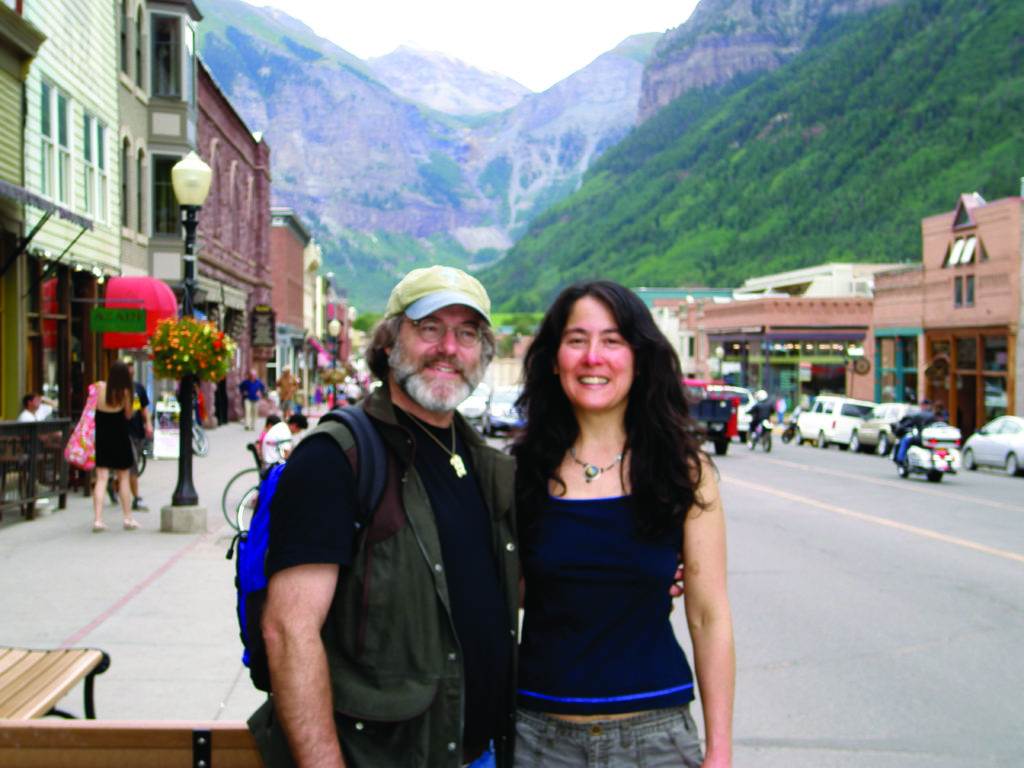
[Laughs] Is devolution spelled D-E-V-O-L or D-E-V-I-L?
[Laughs] You could spell it both ways. People in power often act out of ignorance in the fear of the unknown and suffer from egomaniacal-megalomaniacal personality disorders. The hubris of people in those positions is they think they know everything. If you want to fly in an airplane, you get a trained pilot. If you need surgery, you get a trained surgeon. Putting people outside of their skill sets in positions of power is inherent to failure. So I think that we’re going to experience a major collapse. One of the greatest things about the women’s march was seeing the grandmothers with their granddaughters saying, “This is what you must do. Don’t take it for granted.” Many young people haven’t confronted a national trend that is adversarial to science.
That said, it’s good when skilled experts are open to outside ideas because scientists and experts also suffer from the hubris of not taking in other people’s ideas. I’m an example of that with the bees. I have no expertise in bees, yet I’m the one to discover this?
If I could show a conservative farmer who is pro-Trump that I could save half his crop and his expenses by improving the number of pollinators, is he going to care about my political beliefs? If you are dying of cancer, do you really care about your surgeon’s politics? We are at a new juncture in understanding nature, and it’s time to integrate science and spirituality. It’s time for people to become more integrated like a mycelial network, to share ideas in order to survive the epigenetic challenges we face—which would otherwise be depressing without knowing there were solutions. Unfortunately, most of it is noise. There’s a cacophony of voices distracting us from the priorities that we should be paying attention to. Otherwise, the ecosystem that gives us birth will take away life if we don’t treat her with respect.
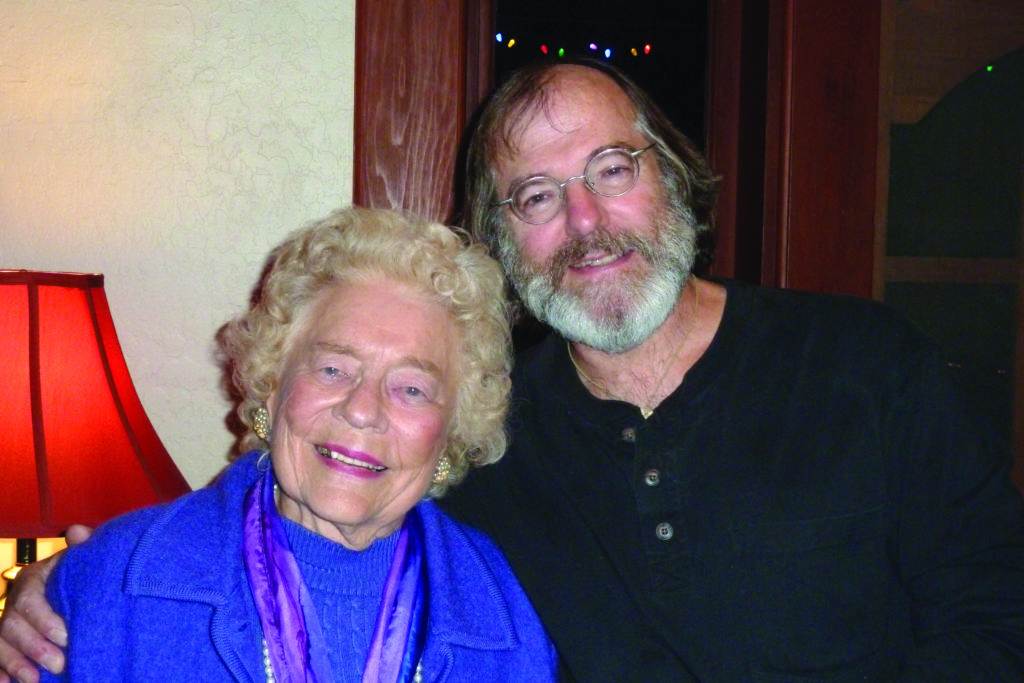
I am so intrigued by the wisdom of the myco-web and hope readers get the message.
For thousands or millions of years we were forest people. Ten, twelve thousand years ago we invented agriculture and then what did we do? We started cutting down the forests and the mushroom habitats, resulting in zoonotic diseases emanating out of the ecosystems. By destroying the forest we’re dismantling the immunological networks that govern our health. Your readers might dispute this, but my intuition may be good on this. I think these fungal networks select the microbiomes in soils and in essence are the overlords controlling the overall health of natural systems.
I read that you’re going to be the new Mr. Spock on Star Trek.
CBS is coming out with a new Star Trek TV series, and the Starfleet science officer is going to be an astro-mycologist named Stamets. It’s a big interest of mine—the idea of terraforming other planets. I consulted with the writers at CBS and was in confidentiality agreements until recently, but it’s official now. Lieutenant Stamets is going to be on Star Trek terraforming other planets—a geek’s dream come true.
You’ve come a long way from that stuttering young freshman in the rainstorm. You make your mama proud.
Actually, there’s an interesting story about my mother surviving cancer with the help of medicinal mushrooms.
Let’s end with that one.
This was in 2008, and my mother—the charismatic Christian who was 83 at the time—had not seen a doctor since 1968. She called me terrified one day. I didn’t recognize her voice, she was crying so much, saying her right breast was five times the size of her left and six angry lymph nodes were dark and swollen to the size of walnuts. Her charismatic Christian healers had come to pray on her and said she was healed, but apparently it didn’t work. So I rushed her to the Swedish Cancer Center in Seattle, where the oncologist told me it was the second-worst case of breast cancer she’d seen in 20 years of practice. The tumor had erupted through her breast and had metastasized across the center line into her liver and sternum. The prognosis was bad. My mom gathered the family and was planning her exit strategy. She chose a pine casket—the cheapest one that she could find because she was going home to Jesus. She selected the hymns and her dress, and there were lots of tears.
It turns out the oncologist was familiar with a University of Minnesota Medical School clinical study that I too was involved with, using turkey tail mushrooms—which are widely used, especially in Asia, for treating a variety of cancers. I had been telling her about turkey tail long before she had cancer, but of course she had to hear it from a doctor. So she started taking eight turkey tail capsules every day in combination with Herceptin, and six months later the tumors all disappeared.
Doctors always hesitate to use the word cure, but after five years of symptom-free deep remission you’re unlikely to have recurrence. My mother is approaching 92 and still cancer free [voice cracks and eyes well] and smart as a whip. She beat my two brothers in Scrabble last year. My mother is now “religious” about taking her blend of 17 medicinal mushrooms that includes turkey tail.
Rob Sidon is publisher and editor in chief of Common Ground.